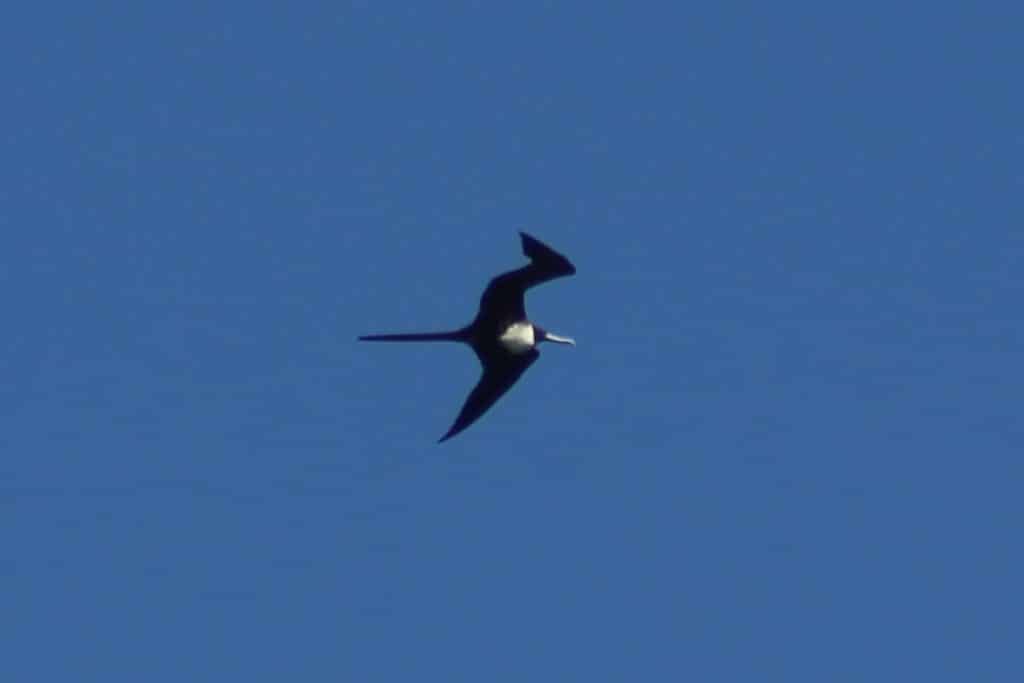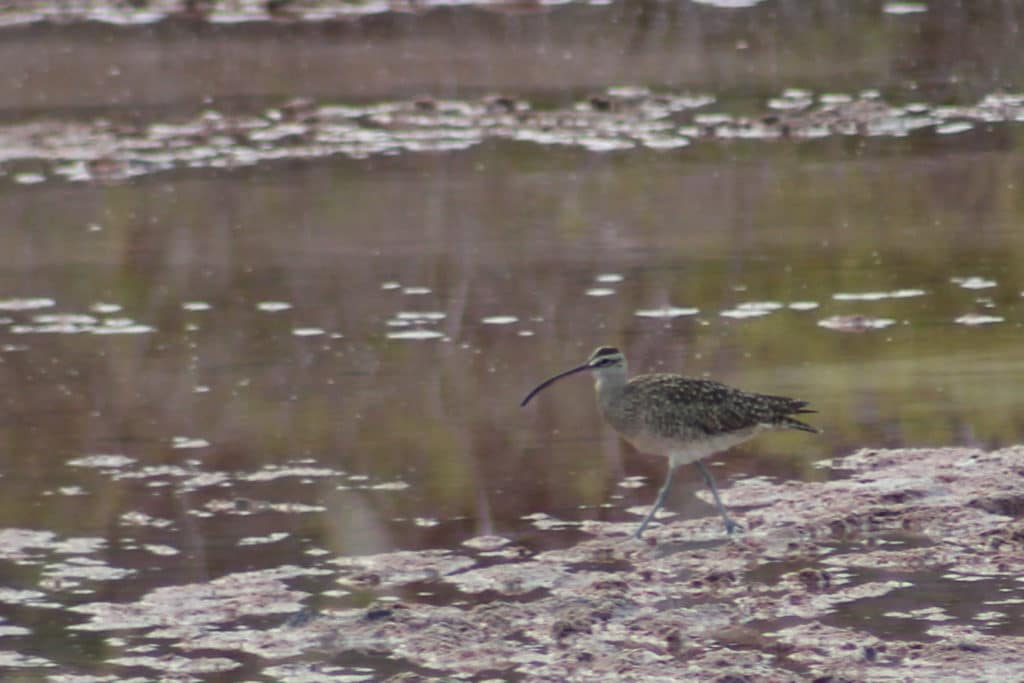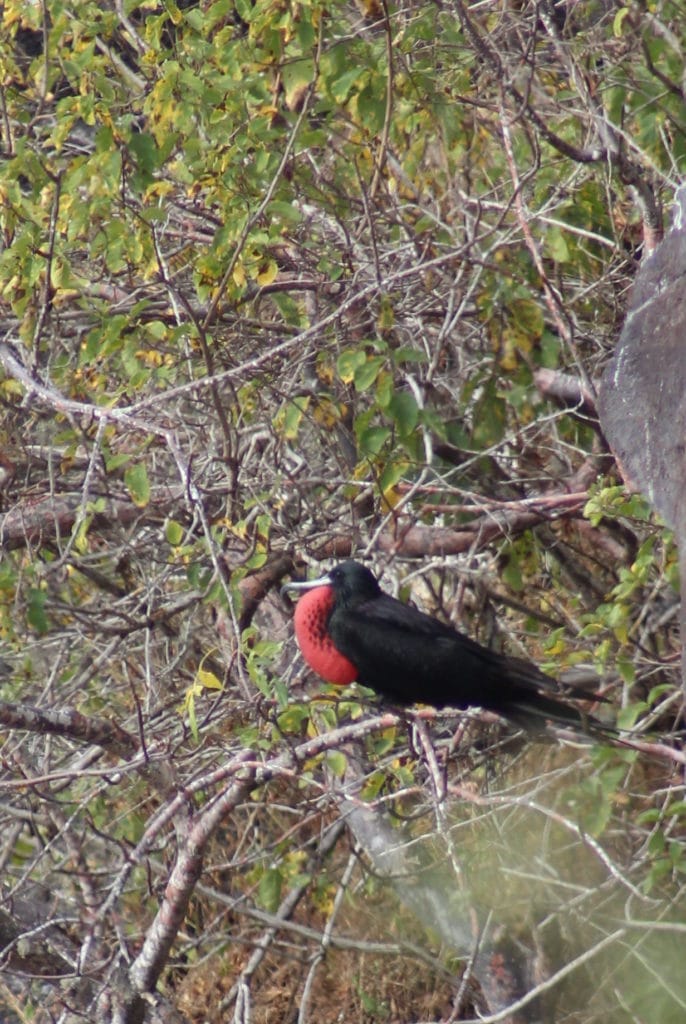A few hours into a slow morning I was writing in my journal and I looked up and 3 yards in front of me was a surprisingly large Whimbrel! I jumped in my chair when I first saw it surprised at how big and how close it was but it didn’t twitch. It went on and continued along the stony shore east stopping for a brief moment to use its long bill to probe amongst the rocks. After a few minutes, it was out of view past McGulpin Rock. This was not the first time I’ve seen a Whimbrel. I saw several of the European subspecies in Iceland and one in a pink salt flat in the Galápagos (photo attached). This is the first time I the species in the ABA (American Birding Association) area. Whimbrels are one of the migration champions with amazing distances. They breed in the high arctic (Alaska and northern Canada) and have a huge wintering range from Delaware and California south along much of the coasts all the way to Tierra del Fuego in Chile! This bird very well may be making its way to its wintering grounds in the Galápagos where it will spend time with marine iguanas and blue-footed boobies or to Argentina where it will walk the shores with Macaroni penguins. The one I saw today has a curiously short bill, compare with the one I saw in the Galápagos.
Just as I thought the day couldn’t get any better I glanced to the west I saw what I thought was an adult bald eagle, a large black bird with a white head but when I saw it through my binoculars I immediately noticed its long pointed wings and distinctly forked tail and my jaw dropped – A FRIGATEBIRD!!! I immediately jumped for my camera and snapped some photos as it glided southwest along the shore of Lake Michigan out of view. Then about an hour later after I was still reeling from the first sighting she reappeared! This time coming back from the west heading east not far offshore going towards the bridge. I immediately phoned Steve Baker at the hawk watch about its reappearance and they were able to spot it! This is the 7th confirmed sighting of the species in Michigan and the northernmost in the state and among the Great Lakes. Magnificent Frigatebird was decided on by its the white on her breast stopping at the throat. They breed in Florida, Baja California, and south to Ecuador in the fall after they’re done breeding they begin to wander usually staying over the mid-Atlantic and the western Pacific oceans but some very rarely stray inland. I also saw this species in the Galápagos where I was able to see a male displaying with its bright red balloon throat pouch (photo attached).
The frigate bird is a very coincidental sighting. A few days ago a past professor of mine and excellent birder Rick Koval back in Pennsylvania had what is possibly the state’s first record of the species. I texted him congratulations on the amazing find and jokingly told him to send it my way. Today she arrived! He also saw an adult female… same bird?








